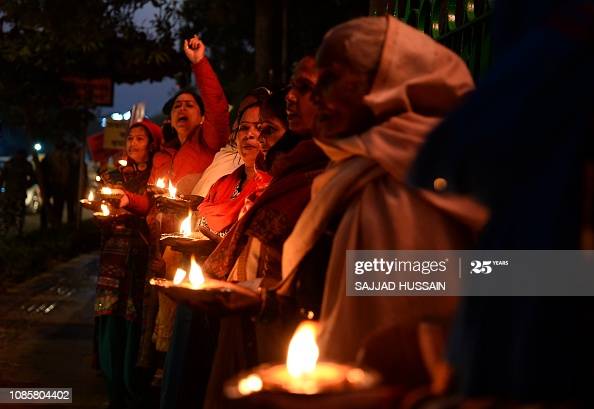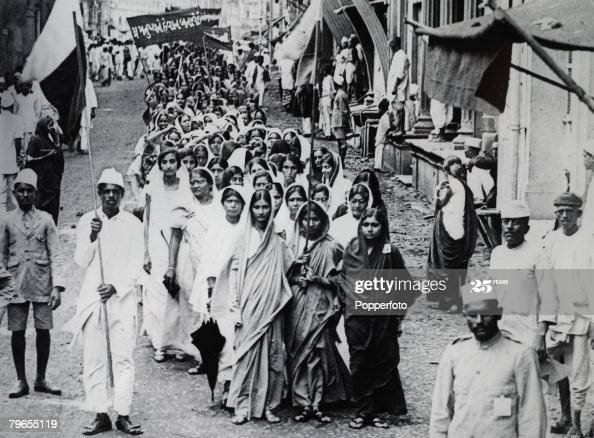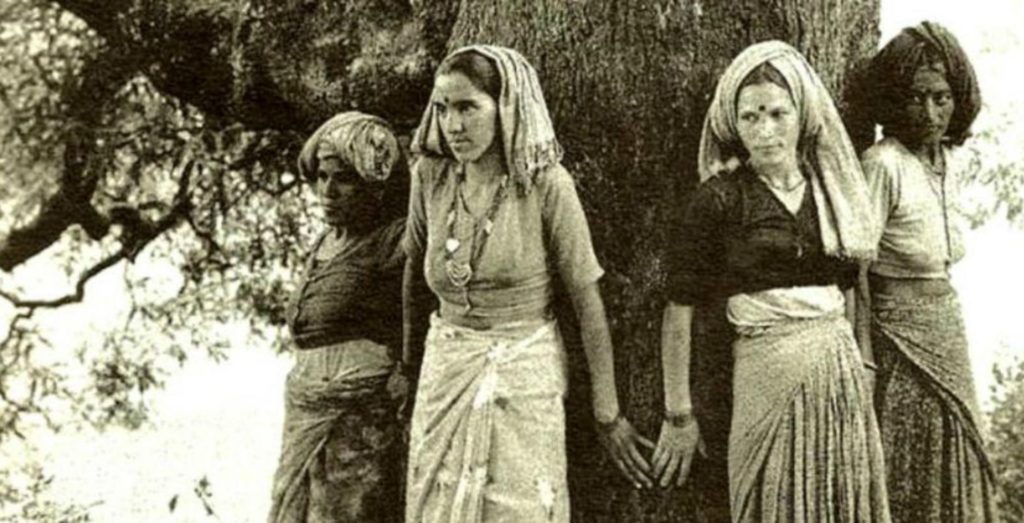
Making their way past the shabby, abandoned buildings, women in clusters walked along the dark lanes of Shaheen Bagh to make a political statement. Little did they know, their fight and determination would go down in history as one of the most ‘powerful women led political movement’. The government and the police officials were unable to deter these women from protesting. Even the frosty days and chilly nights of December bowed before them. Such was the fortitude of these women. They assembled to fight against the injustice and to secure their identity that the Citizenship Amendment Act posed. This was not the first time that women were at the forefront of a political movement. Women have fought and struggled throughout their lives. Houses in the country still reek of discrimination, exploitation and oppression against females. The status quo is changing but still,l there is a long way to go. Till today, women fight for education, public presence, employment, basic freedom, and the right to choose. The society is inherently patriarchal, by virtue of which women are “the second sex”. Whether a woman is working or not, their place is still domesticated, still considered to be in the kitchen. They must run the household, nurture the child, be a good mother, a good wife, a good woman. The ‘good’ here translates to being obedient and docile. Even with a history of subordination and oppression, women have always stepped out in the public domain to fight, to protest. It’s not just the wintry days of December 2019, but history has witnessed women crusade.
Since the struggle for independence we have seen countless women driven political and social movements. From hugging trees to protect from destruction to mobilising on streets to protest against the rape laws and the heinous crime, we have seen women vanguard. From single-handedly leading a change like Medha Patkar for Narmada Bachao Andolan to collectively bringing a change by banning the sale of liquor that furthered their miseries in the form of violence in Andhra Pradesh. Thus, women have brought shades of movements. They have invented modes of protest by using social media hashtags or in worse helpless situations, resorting to violence. Sometimes they take to the streets naked while other times silently sit on the streets. Hence, women have always been at the forefront, wearing different faces but with the same goal. Some instances such movements can be traced to:

Save Silent Valley Movement: In 1928, the Kerala State Electricity Board proposed a location along the Kunthipuzha River ideal for electricity generation and the Planning Commission approved it in 1973. Like any other developmental projects, this threatened the destruction of forests, displacement and loss of livelihood.
A conservationist named Sugathakumari led the Save Silent Valley Movement to save some of the oldest natural forests in the country. Her poem “Marathinu Stuthi” (Ode to a Tree) became a symbol of the protest and the opening song of the movement’s meetings. A lot of women gathered filing petitions and protesting. The protest was effective in the sense that it compelled Indira Gandhi to declare the Silent Valley to be protected in 1981, with PM Rajiv Gandhi inaugurating the valley as a National Park in 1981.
Lahu Ka Lagaan: Menstruation is a biological phenomenon. Out of all menstruating women, only less than 20% use sanitary pads. When the Indian government taxed sanitary napkins, an online campaign called “LAHU KA LAGAAN” was initiated.
Sanitary napkins were taxed before GST and were expected to be exempted from GST, but to the astonishment of half the population of the country, it was not. A petition by Indian lawmaker Sushmita Dev comprising over 400,000 signatures led a storm of protests both online and offline. In July 2018, India scraped its tax on sanitary pads.

Munnar Plantation Strike: Majority of the workers at the plantation site were women and easily exploited under this capitalist structure. They were made to work for long hours and were underpaid. On 6th September 2015, agitation was led and organised by women who demanded a hike in their pay as well as refusing to involve men. Ultimately in the end, their cries were heard.
Pinjra Tod: In its very literal meaning, it is a movement to break free from the shackles and invisible chains that cage women. Tired of moral policing, unjust and sexist rules all in the name of protecting women, a bunch of women hailing from Jamia Milia Islamia took to streets and used other modes of protest like wall art and graffiti to make a statement and created a debate around curfew timings, moral policing, higher prices for women’s hostel and on creating sexual harassment committees in universities. Since the day of formation, they are fighting for injustices meted out to women in particular and also the social injustice in general.
No Conditions Apply: India is diverse not just in the areas of cultures and ethnicity but also in forms of injustices that persist. Many widows, trans-gender/sexual, lesbians and sex workers are shunned from numerous rituals and celebrations in the society citing the premise of long standing superstition that they bring bad luck. Sindur khela is one such celebration where women play with vermillion during Durga Puja. Kolkata Times invited women of all walks of life to the campaign #NoConditionsApply to break the patriarchal practice of allowing just married women to celebrate Sindhur Khela. The #NoConditionsApply hashtag, and the Two dot selfies became viral showing support for the shunned part of the society which they too belong to, and that they too can celebrate coming together as one. The sight of women draped in white and red saree with vermillion smeared on their face was a beautiful and powerful statement to behold.
I Will Go Out: Most stories narrated by women are not bereft of the idea of discrimination when it comes to going out. More often than not it’s the women who are asked to stay within the confines of the four walls, who are bound by time and accordingly the places that they can or cannot visit. If a woman walks along the dark lanes all by herself and is eve-teased or molested, the society will not hesitate in labelling the blame on the shoulders of a girl who in reality was the victim. Henceforth, on 21st January, 2017, a march was organised by a group of people who thought that women have equal rights to public places as men and with the help of social media thousands of women joined across 30 cities and towns to reclaim public places. The movement slashed the idea that some public places are not for women, especially after sunset.

Similarly, we have seen hashtags trending on social media like #saree or #challengeaccepted. These small yet beautiful movements have a great reach and spread a positive wave. They tamper the notion that women are women’s enemies and display the greatest unity. From talking about body positivity to simply feeling beautiful, these small movements challenge the most basic, subtle and normalised culture of gender inequality.
The history of women being at the forefront of a political movement is diverse. The movements led by women are a real effort towards a change because their fight is not just personal. Every time a woman steps out and initiates a movement, one by one the brick of patriarchy dismantles. Their movements are not just political, they have struggled for the conservation of the environment, social rights, cultural equality, economic equality etc. In short, the face of the women movements is wholesome and holistic in nature. Every day, a woman struggles. A woman fights. In the confines of the four walls or the streets, we see women. Wearing different faces and labels, we see women. History has seen women. The present is seeing women. The future will see women.
Content writer Aastha tiwari is a girl who is stating at the clouds from the window sill listening to Surjan Stevens while contemplating the metaphorical undertones coloring the cloud. Role: Content Writer.Educational Qualification: Second year Political science major.Ultimate Goal: UPSC.Biggest achievement: Being featured as the writer of the month for Feminism In India.


